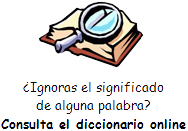| Useful Weather Expressions
Hello. This week on Everyday Grammar, we are
talking about common expressions linked to weather. We got the idea for
the show from an email sent by a Learning English fan in Myanmar.
Thin Ya Thaw asked, “Could you tell me the most useful expressions in
your daily life? This helps me a lot in learning English. I want to know
natural English to communicate with others."
We agree - natural, or conversational, English is a great goal. Thank
you Thin Ya Thaw for the excellent study subject.
There are thousands of expressions people can and do use in their daily
lives. Today, we are going to look at some expressions common to
discussions of weather.
So let’s put on our sun block, pick up our umbrella, or put on our
snowshoes and talk about the conditions in the great outdoors!
The weather in our daily lives
In parts of the United States weather conditions can change very quickly.
You might wake up in the morning to sunny skies and mild temperatures. A
few hours later, it could be very hot and humid. Clouds might form,
developing into a thunderstorm as the night continues.
The weather is a major consideration when we make
plans. We might not want to play baseball in the park in heavy rain, for
example! Or travel to Alaska in the deep of winter!
Let’s start with several kinds of questions that we use to raise the
subject of weather.
Wh-questions and how
What is it like outside?
What’s the weather today?
The structure we use here is what + auxiliary verb or helping verb (be,
do, or have) + subject (+ main verb)
In the first question, the subject “it” refers to the weather.
The answer might be:
It’s raining.
Or…
It is extremely hot.
Or…
It is sunny but starting to snow.
“How” is another common question word linked to climate discussion.
How’s the weather?
“How” acts like a wh-question even though it does not begin with a “wh.”
This structure is similar to the other two questions. But, when you use
“how,” you are more likely to get an opinion than an objective
observation as an answer.
For example, someone might answer:
It’s nice out.
Or…
It’s nasty out there.
Our next “wh-question” is another “how” question.
How hot is it outside?
Or…
How cold is it?
Here we are asking about the intensity of weather conditions.
The answer to these questions calls for an adverb, adjective or an exact
number.
For example, we could respond with:
It’s really hot outside!
Or…
It is freezing!
Or…
It’s 81 degrees outside today.
Yes/no question
We can also ask yes/no questions about the weather.
For example, we could ask questions like:
Is it humid out?
Or…
Is it raining?
Or…
Do I need a coat?
That last question is about the clothing one should wear to be protected
from the weather. The answer will suggest what the weather is like. If a
coat is needed, it is probably cool or cold outside.
The “yes/no” question form is very different from wh-questions. We form
“yes/no” questions with an auxiliary or helping verb (be, do, or have) +
subject + main verb.
The answer could be a simple yes or no. But, commonly, additional
information is also provided, like here:
Should I put on my rubber boots to go to the store?
No. It is sunny skies for the rest of the day!
Closing thoughts
Today we learned some common question and answer phrases that we can use
to talk about the weather in our daily lives. “Wh-words” and “how”
questions can be used to talk generally or to ask opinions about the
weather. “How” questions are more often used to ask about the intensity
of the weather. |
![]() ).
Utiliza el botón derecho del ratón y "guardar enlace" para descargar el
fichero a tu PC, tablet, Smartphone, etc.
).
Utiliza el botón derecho del ratón y "guardar enlace" para descargar el
fichero a tu PC, tablet, Smartphone, etc.![]() Escucha el audio
Escucha el audio



